×

×
Don't Miss Upcoming Promotions
Enter your email below to stay updated on our latest specials.
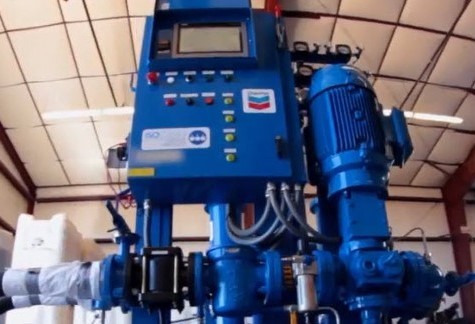
We are excited to introduce a redesigned, updated ISOCLEAN® Recommended ISO 4406 Specs quick links sheet for ISOCLEAN customers.
The one-page link sheet is easy to use and a gear oils spec sheet has been added. The category spec sheets are organized by industry and by component.
As equipment continues to evolve and customers become more aware of the effects contaminants are having on their equipment, it will be important for them to have this capability and evolve their business. Particle contamination is the No. 1 cause of lubricant related failure in equipment. It makes sense to solve this problem, starting with Chevron ISOCLEAN Certified Lubricants is the first step to maximizing equipment life.
The Chevron ISOCLEAN Certified Lubricants program is the industry-leading solution for customers to meet their equipment manufacture fluid cleanliness.
Get to the next level and be on the leading edge with Chevron ISOCLEAN Certified Lubricants!

TOLEDO, Ohio (Aug. 12, 2022) — Interested in reducing downtime, lowering maintenance costs and extending your equipment life? Of course you are!
Healthy fluids are critical to the performance of a heavy-duty vehicle, whether it’s a long-haul truck or an excavator on a construction site. From the engine oil to the coolant to the transmission, gear and axle fluids, contaminants can interfere with a vehicle’s smooth and productive operation. In fact, fluid contamination is a leading cause of downtime and higher maintenance costs.
There’s a common misconception that, simply by changing out the fluids at the OEM’s recommended intervals, you are doing enough to ensure your fluids are clean. There are two issues with that. First, you are missing the opportunity to extend drains well beyond the manufacturer’s recommendation, which is increasingly possible with today’s diesel engine oils. Longer drain intervals are a key strategy in reducing maintenance costs. Secondly, contaminants in the oil can be indicators of problems elsewhere in the vehicle. For example, traces of metal such as copper or aluminum in the oil is a sign that some metal parts, bearings or components are experiencing wear and need to be inspected.
Those are among the reasons that Chevron and other lubricant suppliers wholeheartedly recommend a systematic, in-service fluid analysis program for fleets of all sizes, even small owner/operators, and across both on- and off-highway segments. A fluid analysis program is far easier to implement than you might think. And far from being an added expense, it is an investment that will likely pay you back in the form of reduced downtime, lower maintenance costs, and extended equipment life.
A fluid analysis program typically involves three parties: the fleet maintenance manager, a laboratory that actually performs the analysis, and a partner who can help you analyze the lab’s findings and determine the appropriate action – most likely your lubricant supplier. (Chevron provides this service to our customers free of charge.)
The fleet manager’s job is to take oil samples on a regular schedule and send them to the lab. To ensure you get reliable results, it’s important to follow proper sampling procedures and use the right equipment. Simply opening the drain plug and capturing whatever flows out is not going to give you satisfactory results. The oil may get contaminated from dirt in the environment or even lint from the rag used to open the plug (something we commonly see). The proper bottle, tubing and vacuum pump for obtaining samples are inexpensive and readily available from a variety of sources. For the best representation of the condition of the fluid, take samples from as close to the middle of the fluid reservoir as possible, rather than the top or the bottom. Newer vehicles have been designed to accommodate this.
Just as important as the quality of the sample is the data you provide with it. Make sure you have the accurate unit number and the name of the specific product being used, which the lab will match against its own sample.
Labs can turn the analysis around in as little as 24 hours if needed. You will receive a report that is color coded – red, yellow or green – depending on the severity of the findings. Green means you can continue to operate and monitor the equipment as usual. Yellow indicates some cautionary notes you should be aware of, and red means you have a problem that needs attention. One of the benefits of doing sampling on a regular schedule is that you can see trending over time and whether a problem is getting worse, making it easier to pinpoint the source. As noted earlier, you can share the findings with your lubricant provider, who can help you understand the report and should be able to help you determine what to do if the fluid or additives are showing signs of contamination, metal wear, or degradation.
While this type of program pertains primarily to engine oil, it’s worth quickly noting the importance of coolant analysis as well. Fortunately, it entails far fewer steps and can usually be done in-house. You can use test strips that match the specific coolant technology you are using to check the additive and Ph levels. You can use a refractometer to test the freeze point. The simple tests, however, are the “visual and smell” tests – if the color is close to the original when the fluid was installed, and the odor is not unusual, your coolant is probably in good shape.
Given the relatively low cost and the potentially high payback, it makes sense to invest in a fluid analysis program – a proven and effective way to make sure your equipment is in top operating condition and can perform beyond its life expectancy.
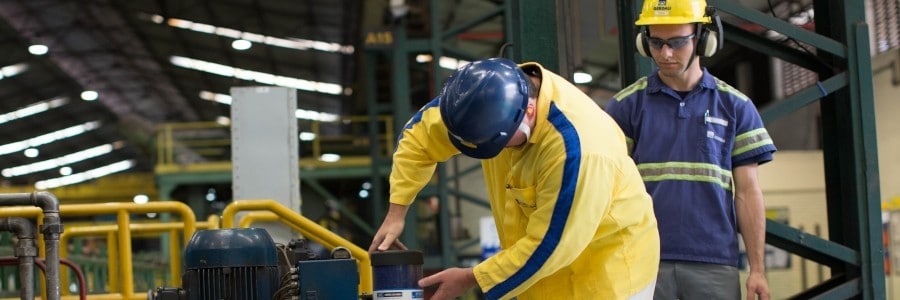
By Mark Barnes, Chevronlubricants.com
(June 20, 2022) — Are you losing the battle on extending equipment life? Are you changing your oil too often or having machine failures? Most companies are now realizing that maintaining clean oil is one of the best investments they can make, with contamination at the core of premature machinery failure and diminished lubricant life. However, many companies do not know where to start in preventing contamination or how to build the business case to get budgetary approval.Purchasing clean oil, such as ISOCLEAN® lubricant, is a great start. Equally important is keeping the oil clean while in use, since contamination often remains an overlooked factor behind premature machinery failure and diminished lubricant life. The ever-increasing cost of oil brings a heightened awareness of the need to minimize usage and waste, as well as a desire to prolong equipment life, making the economic case for protecting oil from contamination — from the time oil enters a facility until it leaves.
The two primary types of contamination are dirt and water. It stands to reason that if the atmosphere is contaminated (and most are to some degree), the oil is probably dirty, and lubricant quality is compromised. Unless you are using ISOCLEAN oils, most lubricants aren’t delivered clean. Particulate contamination, once inside an operating system, will accelerate the generation of new contaminants through abrasive and erosive wear. These contaminants damage critical components and act as a catalyst for oxidation, further degrading lubricant health.
If the atmosphere is particularly humid or has frequent temperature fluctuations, the oil is probably moisture-laden and lubricant quality is compromised. Oftentimes, plant wash down activities are responsible for inducing conditions that lead to moisture ingression and corrosion.
The good news is that these factors, which work together to threaten equipment reliability, can be effectively controlled with some preventative maintenance techniques. The best and easiest way to exclude contaminants is to start with clean oil by using ISOCLEAN oils and to keep the oil clean by deploying effective strategies to exclude and remove contaminants at the source.
A multi-faceted program that includes some simple proactive steps will conquer contamination. Oftentimes, starting a lubrication best practices program can feel overwhelming and stressful, but by using the right steps and the right support, the journey from poor lubrication to preferred practices can become a successful venture. Without careful planning, it can become an exercise in futility where nothing ever gets done, and nothing ever changes. So how do you make sure your lubrication journey is successful and not a failure?
Figure 1: Three steps to effective contamination control

Today, there’s tons of information found online, at training classes and workshops, as well as at conferences. But how do you sift through this plethora of information and make the right choices for your lubrication program? Before a lubrication best practices program can be created it is important to consider the industry and your applications. Every industry and every application are unique, and what’s right for someone in one environment isn’t what’s needed for someone else with a more critical application or different type of equipment with finer tolerances or a plant with different production schedules.
The path you take to reach your destination will depend on your circumstances, budget, and goals. You know where you’re starting from and you know the end goal: get the right amount of oil or grease in each machine, while ensuring that the lubricant is kept clean, dry, and cool. It’s pretty simple. But how do you get there? Maybe you handle oil in barrels, which means a small portable filter unit capable of mounting on top of the barrel is the best route. For smaller volume transfers, a sealed oil transfer container keeps oil clean while in storage and in use throughout the plant. In addition, a desiccant breather keeps the lubricant clean and dry while in use. It is a matter of selecting the best route to lead you to your goal.
Figure 2: A desiccant breather protecting the equipment from particle and moisture contamination.
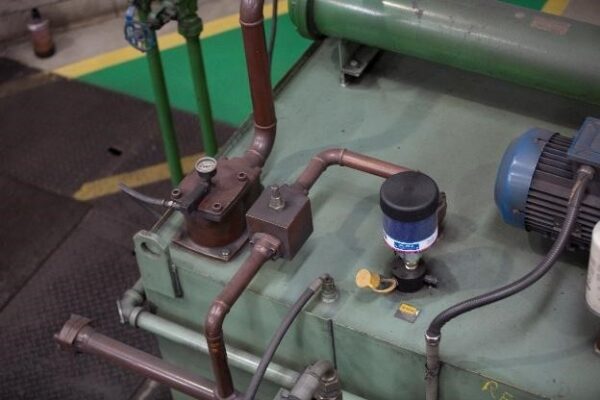
Now you must decide who is actually going to do the lubrication. Do you prefer to have dedicated lubrication techs, general mechanics who also do lubrication, or is your goal to have operators do basic tasks? Each option has pros and cons but this decision is a major “fork in the road” that dictates other decisions down the road.
Once you have chosen the general direction, the choices become even more granular. After you make the “big picture” decisions (bulk vs. barrel, supplier A vs. supplier B, lube tech vs. operator), there’s a host of choices still to be made. For example, electric motor lubrication. Do you want to use a simple route-base process, which includes calculating the optimum volume and frequency to re-grease, or do you want to invest in an ultrasonic tool to make the process more rigorous? Both will give you good reliability if you apply the process correctly.
The decisions are endless: Which color should I color code gear oil? What tests should I do for hydraulic fluids? How should I monitor oil level in my process pumps? Will the electricians be responsible for motor lubrication?
The key is you have a path laid out and start to plan the options and preferences ahead of time to avoid going off course. Starting out with a goal to “improve our lubrication program” is not a plan – it’s a desire. Instead, each decision point should be mapped so options can be considered, and the right decisions made based on a combination of company goals, plant layout and operating environment.
The need for someone to “own” the plan is equally important. All successful lubrication improvements have a champion – the “voice of reason” – to coach and help steer the team into making the right decisions.
However, even the best laid lubrication plans often encounter unexpected issues, some harder to negate than others. The benefit of regularly scheduled oil samples warns of impending problems and drives continuous improvement. This can be the difference between a minor speed bump and a total and catastrophic breakdown.
Simple visual inspections can go a long way toward identifying problems before they become problematic. Using an oil level indicator to check oil levels and inspecting the color and clarity of the oil with a sight glass or bottom sediment bowl are great ways to identify potential issues. Other activities such as recording bearing temperatures with a non-contact infra-red pyrometer, looking at the color of the breather and direction of color change can all pinpoint emergent issues. A basic lubrication check sheet like those used by pilots for pre-flight checks are a good idea to make sure everyone is inspecting the lubricants and expecting the same results.
Figure 3: Replacing a flat sight glass with a 3D sight glass is a simple inexpensive modification that can greatly enhance the reliability of oil level checks.

Not every asset or equipment type is the same and thus, your lubrication best practice program will need to account for that. For example, set tighter limits on contaminants and other oil condition parameters to ensure production or safety on critical assets are kept under strict control. Also, an ISO cleanliness code of 19/17/14 and 500 ppm of water might be acceptable for a large, slow-turning gearbox. However, a more critical high-pressure hydraulic system with servo valves will need a much lower ISO code of 15/13/10 or better and no more than 100 ppm of water. Whenever you exceed those limits, you should be checking the breather and other points of ingression or employing supplemental filtration, until oil analysis tells you oil cleanliness is back in compliance.
Precision lubrication is not a destination, it is a journey. If we’re always looking for an end point where we intend to stop, complacency often sets in, and we slip back into bad habits. Like other reliability initiatives, precision lubrication is about creating a new culture where continuous improvement is built into everyday discussions.
There should be attention and planning about what kind of lubricants we select, how they will be stored, and how they will get from storage to the machine. From cradle to grave, lubricants will be exposed to contaminants, which must be addressed at source to ensure the oil arrives at its final destination, clean and contamination free.
Equipment life can be greatly extended through proper lubrication management, which effectively starts with breather protection, offline filtration, and oil sampling. In today’s competitive market, most companies are now realizing that maintaining clean oil is one of the best investments they can make to reduce premature machinery failure.
By utilizing options outlined above and implementing several contamination control techniques as best practices, maintaining clean, dry lubricants — and gaining the profitability that goes along with it — is easier than ever.
Shrader Tire and Oil proudly carries the Chevron line of heavy-duty and industrial lubricants. Recognized by Chevron as a 1st Source Elite Chevron Lubrication Marketer, Shrader Tire & Oil has attained the highest ranks of performance and customer satisfaction and is committed to the long-term success of your business.
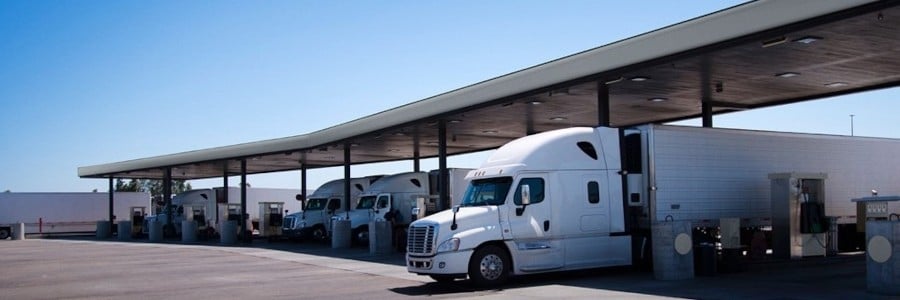
By Shawn Whitacre/Chevron
With fuel prices rising, delivery deadlines getting tighter, and truck drivers in short supply, fleet operators continue to look for ways to streamline their operations and reduce operating and maintenance costs. It means more than focusing only on the initial purchase price of the truck, but instead on reducing the total cost of vehicle ownership.
Fleet operators want improved durability in their trucks to limit turnover and to lower capital expenditures over the long term. They need greater reliability to help increase overall fleet productivity. And they need greater efficiency from their vehicles to decrease their operating costs and fuel spend.
Hardware designs have evolved significantly over the last 30 years to keep up with demands of increasingly stringent regulations. With each change, new demands have been placed on the lubricating oil. With tighter tolerances between components, today’s advanced engine technologies achieve greater efficiency, but are more sensitive and run much hotter than previous designs. And when the engine runs hotter, so too does the oil, which has prompted new demands on oil quality.
Like most things, too much heat can stress the oil. It makes it more vulnerable to breakdown, which can cause it to degrade. Severely oxidized oil will become much thicker than when the oil was new, and can also become acidic and attack internal components like bearings and bushings. Oxidized oil also contributes to deposit formation in places like the turbocharger and power cylinder. Elevated temperatures can also cause a portion of the oil to evaporate, which can impact oil consumption and further accelerate degradation.
Of course, engines and the oils that protect them must be robust not only at elevated temperatures but also at the very low temperatures encountered upon winter startup. Fluids that can handle these wide temperature swings have what oil formulators call high “viscosity index.” Increasingly, we turn to synthetic oils that, when formulated with high performance additives, deliver on the high stability, low volatility, and high viscosity index that today’s operators demand.
It’s helpful to understand the difference between conventional and synthetic oils. Conventional oils are made from refined crude oil and undergo further processing to remove harmful impurities and to further tailor their properties. In contrast, synthetic base oils are purposely built chemicals that are synthesized to deliver high performance. Synthetic base oils are generally less volatile, and more chemically stable than conventional base oils. Yet, they are particularly robust at low temperatures as well.
Of course, it is not just the synthetic base oil that delivers these properties, but also the additive package that is unique to each producer. The greatest potential for high performance comes from the optimal combination of synthetic oils and additive formulation expertise. The properties we often attribute to synthetics are actually the result of the additives working with the base oil to produce the desired performance. More simply stated, not all synthetics are created equal.
With the trend toward smaller, technologically advanced heavy-duty engines, we have seen a parallel trend toward lower viscosity lubricants. This is leading logically to the wider use of synthetic blends, and ultimately, full synthetic engine oils. With the right additive formulations, synthetic lubricants will help deliver on the goals of lower emissions and high fuel economy that truck manufacturers have been working towards. Fleet managers would do well to understand the benefits of synthetics and to prepare for this transition as they upgrade their fleets.
Shrader Tire and Oil can help meet all of your heavy duty synthetic oil needs. Contact our customer service department today at 800-589-6589 and ask about our products and services. We keep the transportation industry rolling and safe!

By SHAWN WHITACRE/For Chevron
With diesel fuel prices surging north of $5.00 per gallon across the country, fleet operators are looking for more ways to control their biggest operating expense by increasing fuel economy. Most likely you are already doing all you can to improve vehicle aerodynamics and keep tires properly inflated. But there is another, less obvious and often overlooked way to gain a few extra percentage points in fuel efficiency: your choice of an engine oil.
Let’s start with the weight or viscosity of the oil. To reduce fuel consumption, you need to reduce friction in all its forms throughout the vehicle. And one source of friction is the thickness of the oil. A 40-weight oil is going to put up more resistance within the engine than a 30-weight. So just by moving from a 15W-40 to a 10W-30 viscosity oil, you are going to reduce the resistance, or friction, caused by the oil. In doing so, you will have more horsepower available, which means you don’t have to force as much fuel into the engine to maintain your desired speed. This simple change in viscosity can translate to as much as a 1% improvement in fuel economy – which may sound small, but at today’s prices, it can add up to a substantial savings per truck per year across an entire fleet.
Many truckers tend to have more confidence in thicker oils because that is what they are used to. However, if a truck is no more than 10 to 15 years old, you can safely move to a lower weight oil without compromising on engine protection and performance. In fact, the major truck OEMs have been using 10W-30 oils as their factory fill since 2013, and most agree that today’s 10W-30 oils could be backwards compatible as far as the 2007 model year. With the potential fuel savings, switching to a lower viscosity oil definitely warrants consideration.
What about synthetics? You may see a small fuel economy gain by moving from a conventional oil or semi-synthetic “synblend” to a full synthetic oil. It won’t be as significant a gain as the change from a 40 to a 30-weight viscosity, but again, every increment counts in today’s economy.
Another potential source of fuel savings is improving the performance of the exhaust aftertreatment system, specifically the diesel particulate filter, or DPF. Many operators may not realize that the engine oil plays a critical role in the health of the DPF. Non-combustible metallic additives in the oil are the chief cause of unburned ash accumulation in the DPF, which impedes fuel economy in a couple of ways. As ash builds up and starts clogging the filter, it restricts the flow of exhaust. The resulting buildup of exhaust gases in the system causes backpressure, forcing the engine to work harder to push exhaust out, meaning the engine is going to burn more fuel just to operate normally. The engine loses horsepower in the process, and the driver’s natural impulse is to press harder on the gas pedal to compensate, causing fuel to burn even faster.
DPF clogging also leads to an increase in the number of forced regenerations required to burn out the soot that builds up along with the ash. If we estimate that every regen burns about one gallon of fuel with the truck in a stationary position, then more frequent regens are going to reduce fuel economy dramatically. Chevron research has found that the combination of backpressure and more frequent regens exacts a fuel economy “penalty,” or loss of 3% to 6% over the DPF service lifecycle.
The easiest solution to excessive ash accumulation in the DPF is an ultra-low ash oil. Chevron introduced the first such oil for heavy duty diesel engines, Delo® 600 ADF, which has been shown to reduce ash accumulation in the DPF by 60% and improve fuel economy retention by as much as 3%. Along with the potential fuel savings, using an ultra-low ash oil reduces DPF maintenance costs and regeneration downtime.
Let’s hope $5.00-plus diesel fuel is a temporary situation. But if and when inflation cools down, economists predict that prices are likely to remain higher than we were previously accustomed to for the long haul. Now is the time to take advantage of the latest lubrication technology to help offset the impact of rising fuel prices.
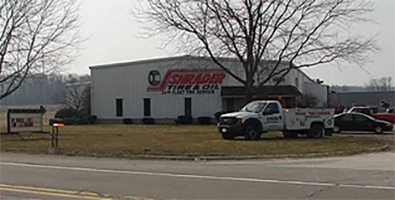
517.486.4633

513.733.8200
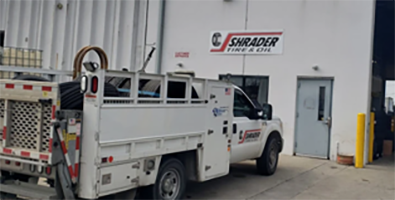
614.445.6601
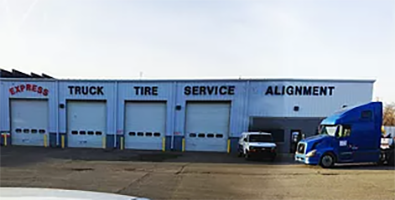
313.386.0451
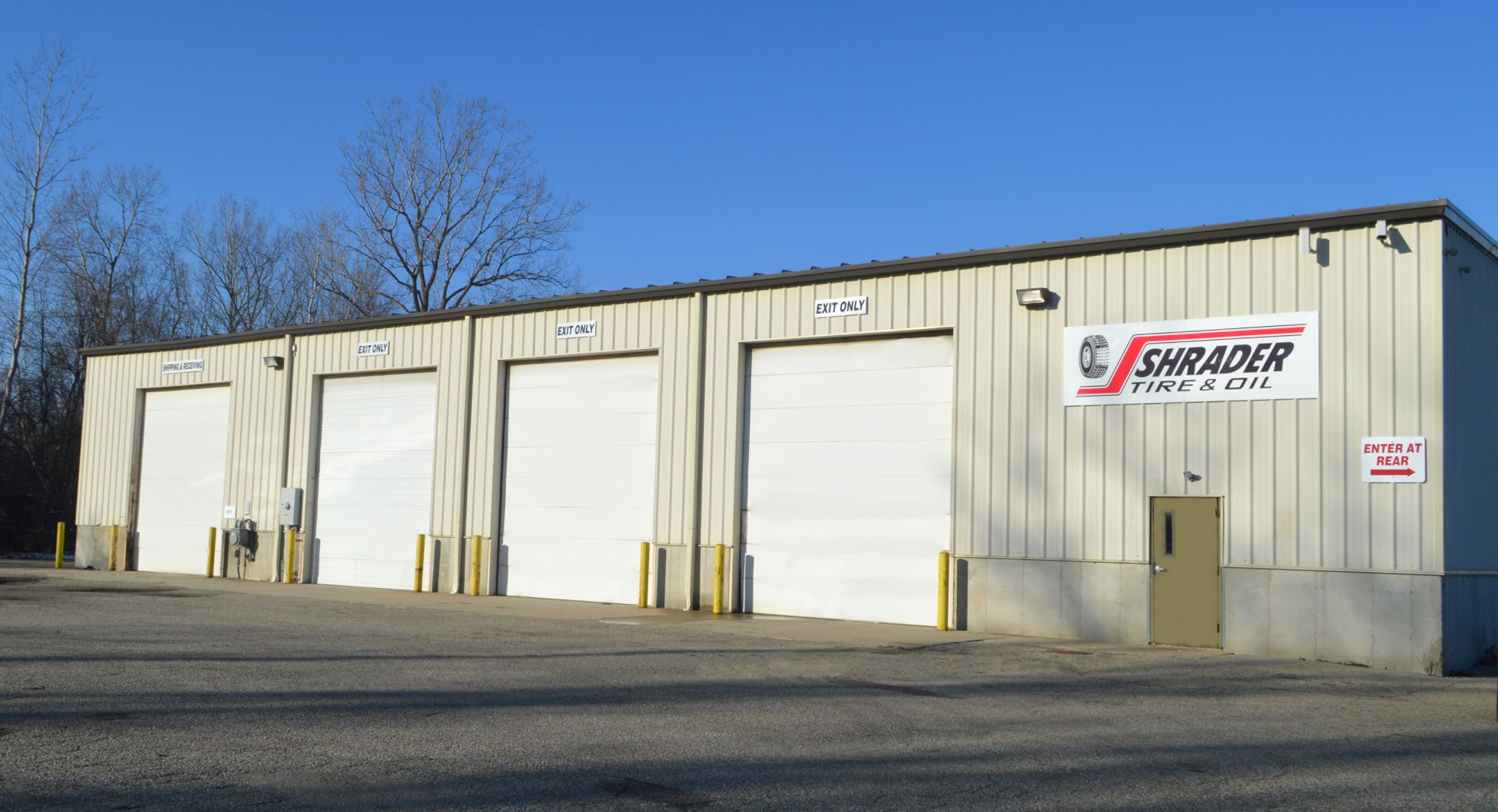
810.288.6458
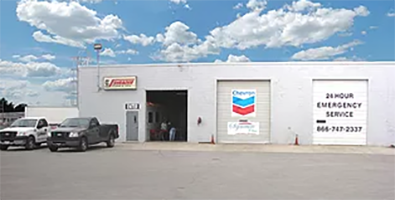
260.420.8435
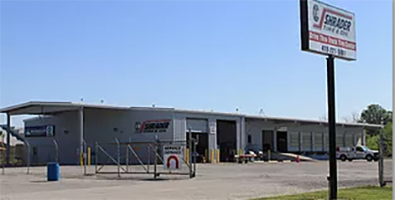
419.221.5001
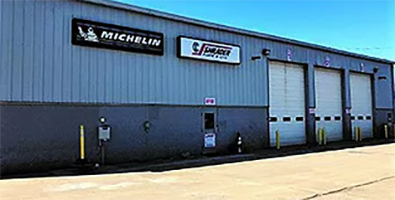
740.788.8032
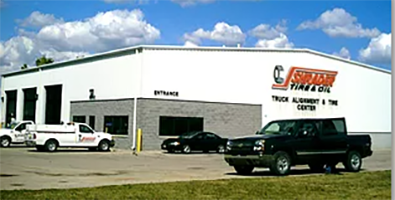
419.727.9468
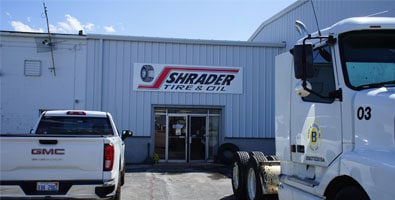
419.837.6591
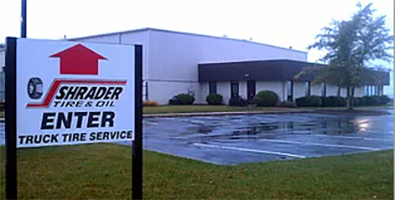
574.968.0067
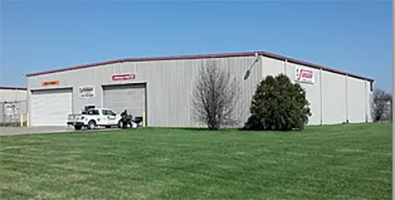
734.434.9300
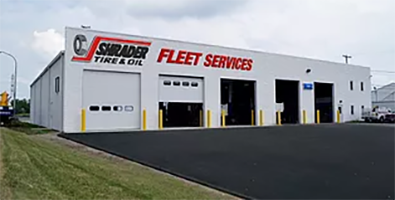
419.720.0422
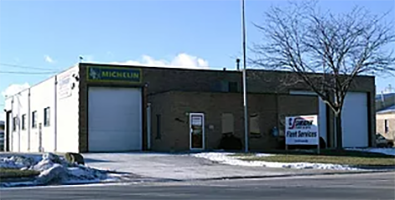
586.777.9030